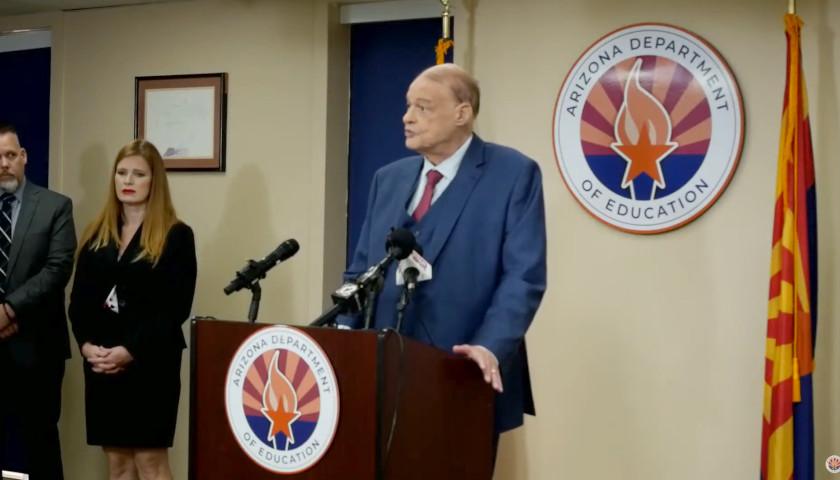The new director of Arizona’s Empowerment Scholarship Account (ESA) program announced this week plans to use artificial intelligence (AI) to “scale up” the program’s operations after 50,000 students joined the school voucher program.
Arizona now has nearly 62,000 students enrolled in the ESA program, according to Arizona Capitol Times, including about 12,000 students who enrolled in the last three months. The Arizona Department of Education (ADE) previously estimated another 50,000 students could join over the next year.
To facilitate the continued growth, new ESA executive director John Ward told The Arizona Republic he planned to use AI to streamline enrollments and purchase orders, using the novel technology to avoid costly new hires for the program.
“The reality is we’re not gonna be able to hire enough people to keep up with the number of purchases coming in,” he told the outlet, explaining that AI would help achieve his his primary focus: creating “systems” to “scale up to the growth” as more families flock to ESAs.
Acknowledging concerns about private contractors, Ward clarified that purchase orders from large, third-party contractors will continue to be manually reviewed.
Ward became the executive director of the ESA program earlier this year, taking over following the sudden resignation of his predecessor. A public school teacher before joining the Arizona Auditor General for 16 years, according to his LinkedIn, Ward was initially hired by Arizona Superintendent of Public Instruction Tom Horne to increase the program’s transparency.
Arizona’s school choice program has been targeted for criticism by Governor Katie Hobbs (D), who claims its cost could overwhelm the state budget, and Attorney General Kris Mayes (D), who warned about possible pitfalls of the program.
Hobbs called ESAs “unsustainable” in July, citing a potential $320 million shortfall in the Arizona General Fund, and attributed part of the blame to students who were not previously enrolled in public schools enrolling in ESAs. In response, Horne noted that ADE provided a nearly identical cost estimate in May.
Also in July, Mayes issued a public warning to Arizona parents, claiming students “give up rights” when leaving public education, especially those with a disability and unscrupulous vendors. Horne asserted that “special education students receive the same funding as they would attending public school.” Separately, a report revealed that 10,000 students enrolled in the ESA program self-identify as having some form of disability.
Arizona House Speaker Ben Toma (R-Peoria) recently defended the program to the media, calling criticisms about the ESA program’s costs “disingenuous” and maintaining that ESAs remain popular with most Arizonans, regardless of political affiliation.
Toma explained, “It is a partisan issue in this building and this Capitol complex, but it is not a partisan issue largely with parents.”
Last year, Arizona Republicans successfully voted to expand ESAs, with the goal of creating the “most expansive education savings account program in the nation.”
– – –
Tom Pappert is the lead reporter for The Georgia Star News and a reporter for the Arizona Sun Times. Follow Tom on X/Twitter. Email tips to [email protected].





